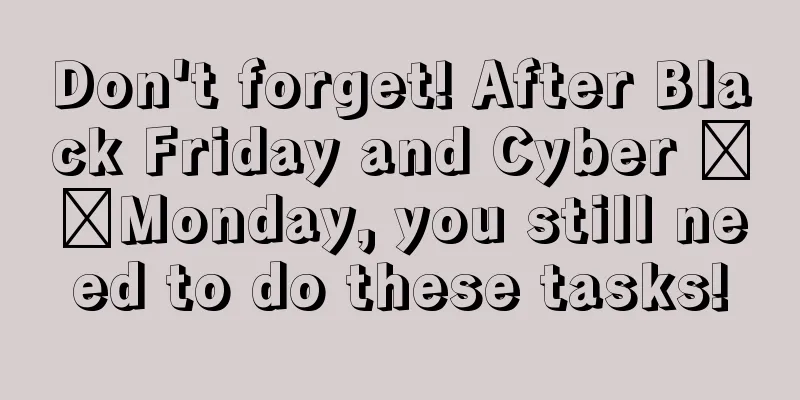Although "Black Friday Cyber Monday" has broken records again and achieved great results, in the cross-border e-commerce circle, the most heartbreaking thing is to watch others' orders explode while you have to work hard.
Many sellers are overwhelmed with orders, but some sellers are still the familiar "Lin Dan".
Why didn't your order explode?
Amazon has a fast same-day delivery service, but most Americans still go to supermarkets and shopping malls to celebrate Black Friday and buy discounted products, so online sales are naturally not as good as offline sales;
Especially for some big-name products, which have accumulated brand reputation over decades or even hundreds of years, the sales volume in offline physical stores far exceeds the listings on Amazon.
It can be seen from this that the reasons why some sellers did not receive a surge in orders include improper product selection and the impact of offline physical stores.
Why are others so popular on Black Friday?
From the essence of Black Friday, offline retail is the main venue of Black Friday, but why are there still Amazon sellers with huge orders?
Ultimately, the huge traffic on Amazon comes from products that are difficult to buy offline or have a high cost-effectiveness.
Sellers who have a huge sales volume on Black Friday pay more attention to whether the products are in line with American culture. In addition to good listing rankings and a large number of reviews, it is more important to choose products that are difficult to buy offline or have a high cost-effectiveness online.
What else is there to do after Black Friday?
View reports
The end of the year is the best time for sellers to check inventory, sales, expenses and profits. After Black Friday and Cyber Monday, sellers can go to Amazon Seller Center to view relevant reports, such as:
Monthly Inventory Report
Amazon FBA Inventory Report
Inventory received report
Inventory Health Report
Actual income report
These reports require sellers to review and analyze them before the end of the year.
Processing Returns
After a surge in orders, sellers are likely to encounter the legendary “return addicts” and may receive more return requests from customers at the end of the year.
Although Amazon allows you to charge a 20% restocking fee when the customer returns the product for reasons not attributable to the seller, sellers are still required to process refunds within 48 hours or less. However, this can present some issues for sellers, who may need to:
Determine restocking fees or reconsider return policies
Adding extra manpower to process returns
Securing additional liquidity to pay refunds
Dealing with slow-moving inventory
For many Chinese sellers, if there is too much inventory of products for Black Friday and Cyber Monday and the products are unsaleable, Amazon will also charge long-term storage fees. How to effectively deal with these old inventory of products becomes a problem.
1. Direct cleaning
If the inventory of unsaleable products is small and of low value, in order not to affect the long-term operation plan, you can directly create a removal order through the Seller Center backend and apply for Amazon to destroy it. In this way, although Amazon will charge a certain removal fee, abandoning these products will not cause too much cost loss. After clearing the unsaleable inventory, the seller can focus on other operations.
2. Bundled Sales
Some low-priced products may not sell well even after many changes in sales methods. In this case, you might as well change your mindset and use it as a bundled product and give it away as a gift when the buyer's order reaches a certain amount. This approach can usually attract Amazon's shoppers.
3. Off-site traffic discount promotion
If the product has sufficient inventory and a certain audience, sellers can use some off-site platforms to promote it, such as:
Independent station traffic
Email marketing lead generation
Social Media
Paid social media advertising
Search Engine Advertising
Internet Celebrities
Deal Station
For most sellers, they have just experienced the highest sales volume in history during the holiday season and are still in the excitement and carnival. However, now is not the time to completely relax. Sellers still need to consider how to cope with the coming December year-end peak season and prepare for the new year.

